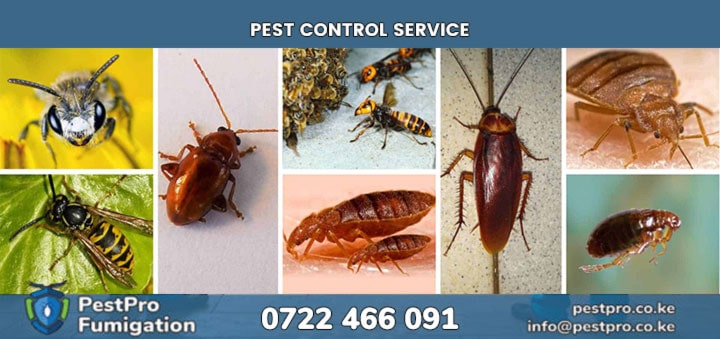Nairobi’s unique climate presents significant challenges for effective pest control. Situated at a high altitude of approximately 1,795 meters above sea level, the city experiences a mild, temperate climate with distinct wet and dry seasons. These conditions create an environment where pests such as mosquitoes, termites, and rodents thrive, complicating efforts to manage infestations. This article explores the specific climatic factors that exacerbate pest issues and the strategies needed to address them.
A Temperate Climate Ideal for Pests
The city’s moderate temperatures, typically ranging between 10°C and 28°C, provide a comfortable habitat for a wide range of pests. Unlike extreme climates that naturally limit pest populations, Nairobi’s consistent warmth allows insects like mosquitoes and cockroaches to remain active year-round. The absence of harsh winters means these pests do not face seasonal die-offs, leading to sustained population growth. Additionally, the high altitude contributes to a stable environment, fostering rapid reproduction cycles for species such as termites, which can cause significant structural damage if left unchecked.
"Nairobi’s mild temperatures create a year-round breeding ground for pests, making consistent control measures essential." – Dr. Jane Kamau, Entomologist
Wet Seasons Amplify Pest Activity
Nairobi experiences two rainy seasons: the long rains from March to May and the short rains from October to December. These periods of high humidity and abundant water sources create ideal breeding conditions for pests. Mosquitoes, for instance, lay eggs in stagnant water pools that form during heavy rains, leading to population surges. Similarly, the moisture promotes fungal growth, attracting ants and other insects. The wet seasons also drive rodents indoors, seeking shelter and food, which increases the risk of contamination in homes and businesses.
"Rainy seasons in Nairobi can increase mosquito populations by up to 50% due to abundant breeding sites." – Kenya Ministry of Health Report
Dry Seasons and Pest Adaptation
During the dry seasons, typically from June to September and January to February, pests adapt to survive in harsher conditions. Termites, for example, burrow deeper into the soil to access moisture, making them harder to detect and eliminate. Cockroaches and rodents, meanwhile, become more aggressive in seeking food and water, often infiltrating homes and commercial spaces. The alternation between wet and dry seasons creates a cycle where pests are constantly adapting, requiring pest control strategies to be dynamic and proactive to remain effective.
"Pests in Nairobi have evolved to withstand dry spells, making them resilient and harder to eradicate." – Peter Mwangi, Pest Control Expert
Urbanization and Its Role in Pest Proliferation
Rapid urbanization exacerbates pest control challenges in Nairobi. The city’s expanding population and infrastructure create abundant food sources and hiding spots for pests. Open drainage systems, common in many areas, serve as breeding grounds for mosquitoes and flies. Construction sites, with their piles of wood and debris, attract termites and rodents. Moreover, improper waste management in densely populated areas provides pests with easy access to food, further complicating control efforts. Urban environments amplify the impact of Nairobi’s climate on pest populations.
"Urban growth in Nairobi has increased pest habitats by 30% over the past decade." – Urban Planning Study, University of Nairobi
Effective Pest Control Strategies
Addressing Nairobi’s pest challenges requires tailored strategies. Regular inspections and preventive measures, such as sealing entry points and maintaining clean environments, are critical. During rainy seasons, eliminating standing water and using larvicides can reduce mosquito populations. In dry seasons, baiting and trapping are effective for rodents and cockroaches. Integrated Pest Management (IPM), which combines biological, chemical, and physical methods, is particularly suited to Nairobi’s climate. Professional pest control services with local expertise can adapt to seasonal changes and urban conditions to ensure long-term success.
"Integrated Pest Management is 70% more effective than traditional methods in Nairobi’s variable climate." – Pest Control Association of Kenya
Nairobi’s climate, with its temperate conditions, alternating wet and dry seasons, and urban challenges, creates a complex environment for pest control. By understanding these factors and implementing strategic measures, residents and businesses can better manage pest populations and protect their properties.
More pest Control ServicesPestPro Facebook Page
Medium
